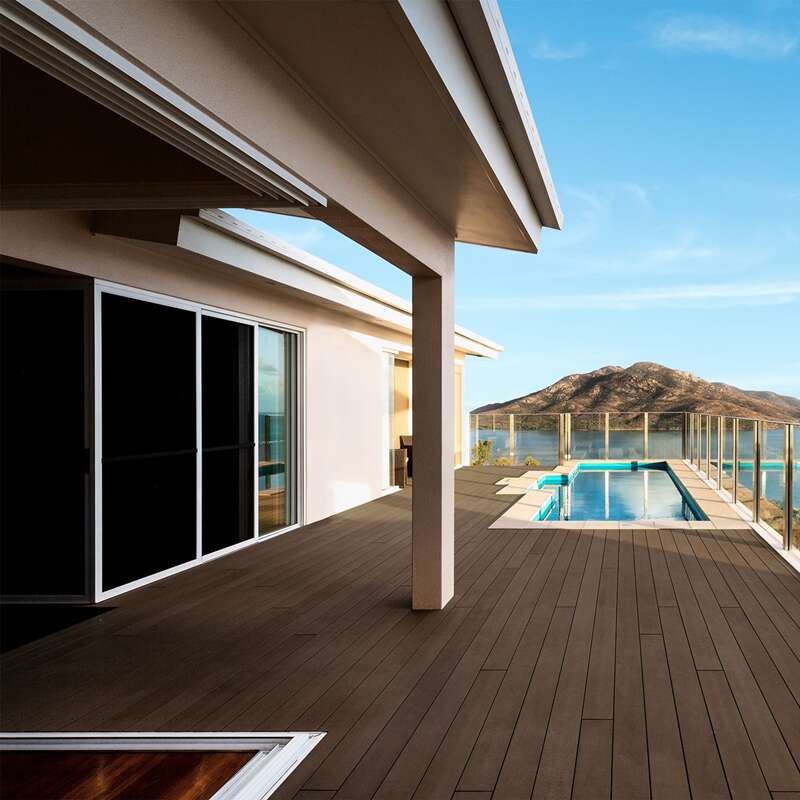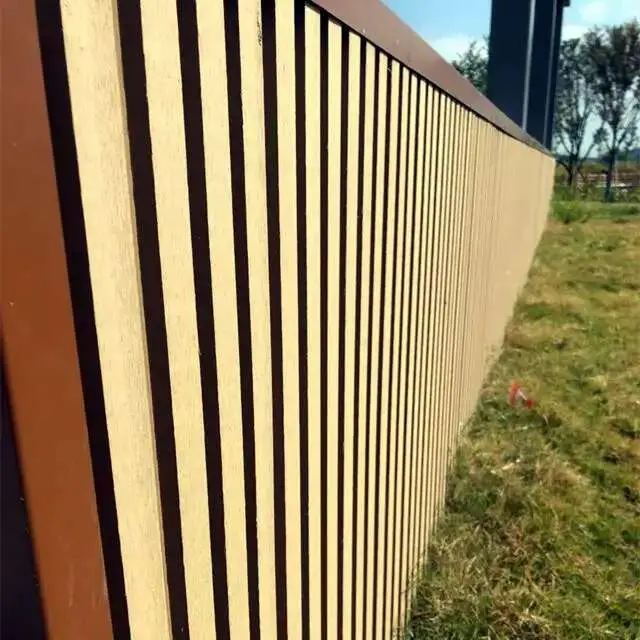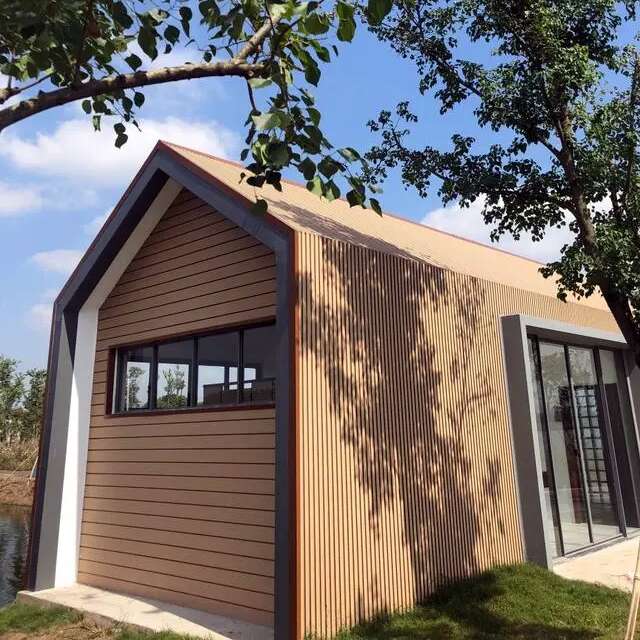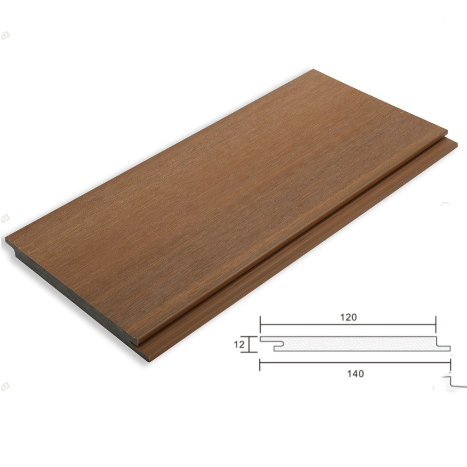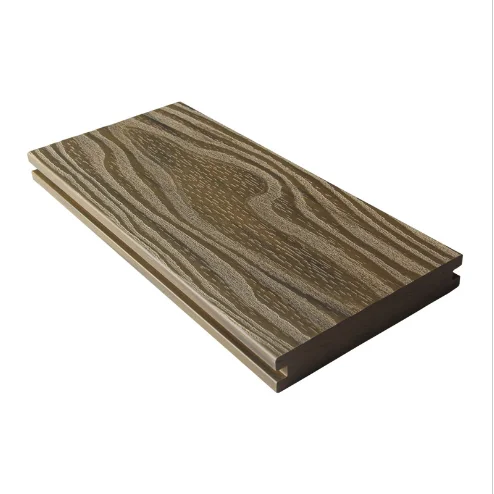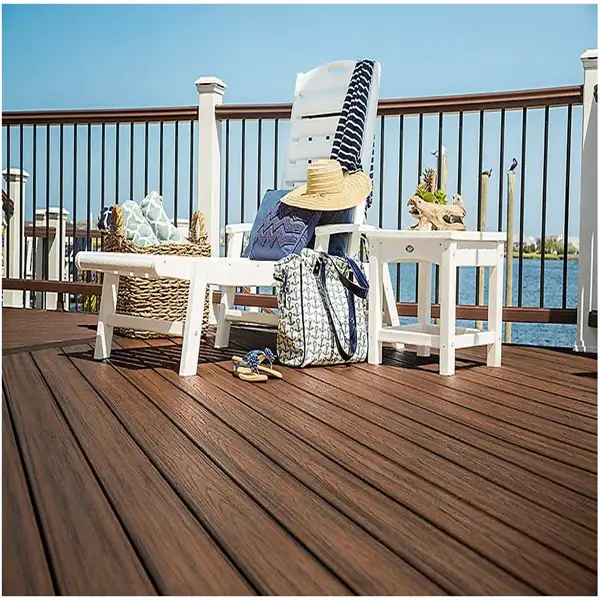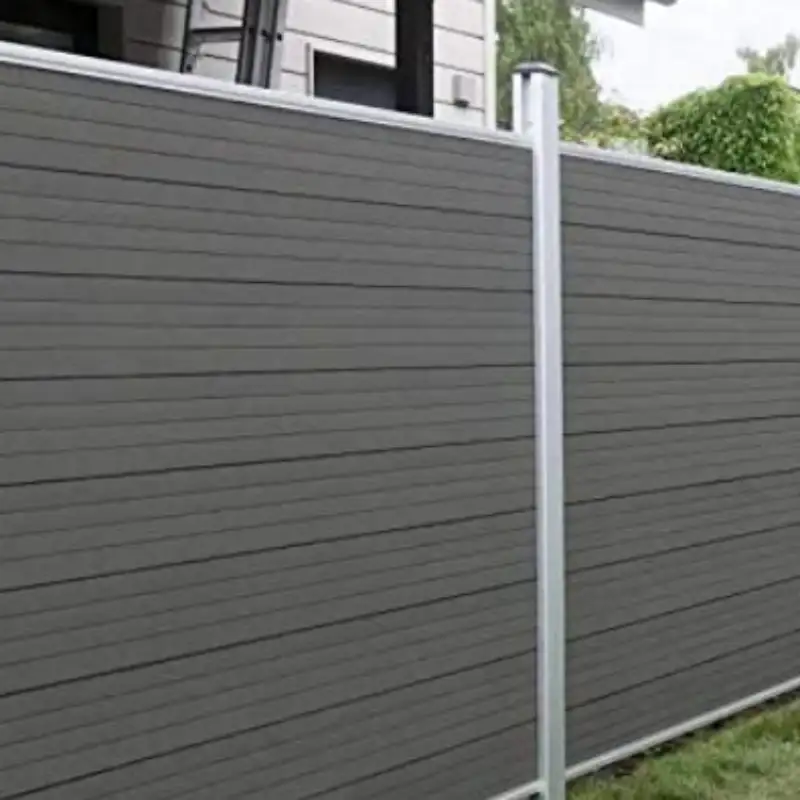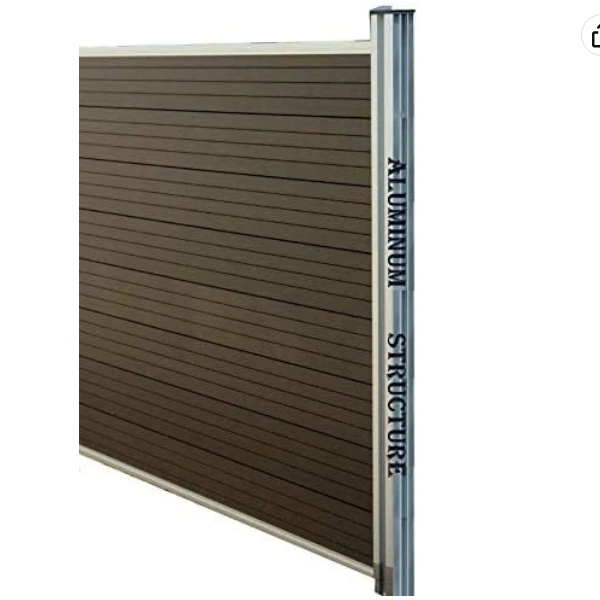What is Wood-Plastics Composites?
Wood-Plastics Composites (WPC for short) is a material composed of plant fibers and plastic raw materials. Among them, wood fibers such as sawdust, shavings, wood chips, bamboo chips and coconut shells, etc., and herbal fibers such as wheat straw, cotton straw, hemp straw, bran, soybean hulls, peanut shells, cotton straw, sunflower straw, bagasse, etc., are all Discarded low-value natural resources, after being screened, crushed, ground and processed, become wood raw materials for WPC. The plastic raw materials used for wood-plastic material processing can be thermosetting plastics, such as phenolic resins, amine-based resins, epoxy resins, etc., or thermoplastics. The commonly used additives for wood-plastic products are mainly solubilizers, coupling agents, lubricants, foaming agents, colorants, antibacterial agents, and UV stabilizers. These materials are non-toxic and harmless to the human body and the environment.
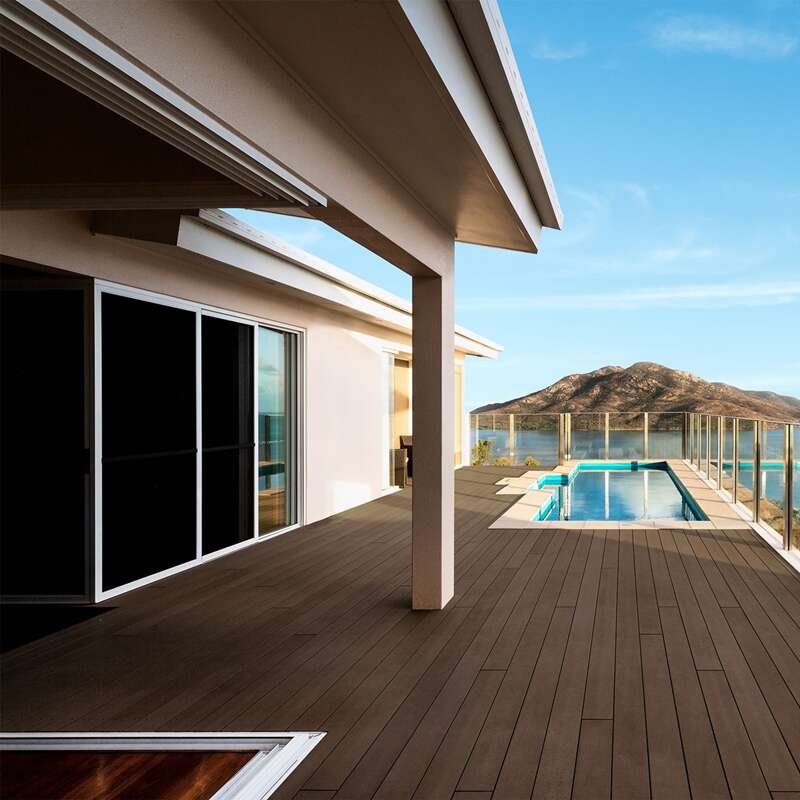
The characteristics of Wood-Plastics Composites are as follows
The basis of wood-plastic composite material is high-density polyethylene and wood fiber, which determines that it has some characteristics of plastic and wood.
1) Good processing performance Wood-plastic composite materials contain plastics and fibers. Therefore, they have similar processing performance to wood. They can be sawed, nailed, and planed. They can be completed with woodworking tools, and the nail holding force is significantly better than other synthetic materials. Mechanical properties are better than wood materials. The nail holding force is generally 3 times that of wood and 5 times that of particleboard.
2) Good strength properties The wood-plastic composite material contains plastic, so it has a good elastic modulus. In addition, because it contains fibers and is fully mixed with plastic, it has physical and mechanical properties such as compression resistance and bending resistance comparable to hardwood, and its durability is significantly better than ordinary wood materials. The surface hardness is high, generally 2-5 times that of wood.
3) It has water resistance, corrosion resistance and long service life. Compared with wood, wood-plastic materials and their products are resistant to strong acid and alkali, water resistance, corrosion resistance, and do not breed bacteria, are not easy to be eaten by insects, and do not grow fungi. Long service life, up to more than 50 years.
4) Excellent adjustable performance Through additives, plastics can undergo polymerization, foaming, curing, modification and other changes, thereby changing the density, strength and other characteristics of wood-plastic materials, and can also achieve anti-aging, anti-static, flame retardant, etc. special requirements.
5) It has UV light stability and good colorability.
6) Its biggest advantage is to turn waste into treasure, and it can be 100% recycled. It can be decomposed without causing "white pollution", and it is a real green environmental protection product.
7) Wide range of raw material sources The plastic raw materials for the production of wood-plastic composite materials are mainly high-density polyethylene or polypropylene, and the wood fiber can be wood flour, grain bran or wood fiber, and a small amount of additives and other processing aids are required.
8) Can be made into any shape and size as required.
Advantages of Wood-Plastics Composites
(1) Good social economy, sustainable development, especially suitable for my country's national policy of "natural forest protection";
(2) Durable, long life, similar to wood appearance, higher hardness than plastic;
(3) It has excellent physical properties, better stability than wood, no cracks, warpage, no knots, twill, and can be made into various colorful products by adding colorants, laminations or composite surfaces;
(4) It has the processability of thermoplastics and is easy to form. It can be processed by general plastic processing equipment or after a little modification. The new investment in processing equipment is less, which is convenient for popularization and application;
(5) It has secondary processability similar to wood, which can be cut, bonded, and fixed with nails or bolts;
(6) It is beneficial to decoration and decoration, and can be painted and beautified. The product specification and shape can be adjusted according to user requirements, with great flexibility;
(7) Not afraid of moth-eaten, aging resistance, corrosion resistance, low water absorption, no moisture absorption deformation;
(8) Can be reused and recycled, biodegradable, and protect the environment;
(9) Conducive to environmental protection, waste wood, crop fibers and waste plastics can be used as materials;
(10) Abundant resources, low cost and low cost.
Disadvantages of Wood-Plastics Composites
(1) High density, usually 2-4 times that of wood;
(2) The installation cost of the product is relatively high (due to the high density of the composite material, it is necessary to use a nail gun or self-tapping screw during assembly);
(3) Poor heat resistance and UV resistance;
(4) The hardness and load capacity of the product are worse than those of wood.
In general, wood-plastic composite materials have been used more and more widely nowadays. Because their shape and color are very similar to wood materials, and their waterproofness, moisture resistance and practicability are much higher than those of wood materials, they are now obtained. The attention and recognition of the majority of consumers. And now the output and use of wood-plastic composite materials are also increasing year by year.
The main uses of Wood-Plastics Composites
With the research and development of wood-plastic composite materials, the plastic raw materials for the production of wood-plastic composite materials include polyvinyl chloride and PS in addition to high-density polyethylene or polypropylene. The process has also been developed from the earliest single-screw extruder to the second-generation conical twin-screw extruder, and then to the initial granulation by the parallel twin-screw extruder, and then extruded by the conical screw, which can make up for the difficult plasticization. , poor aging resistance, poor creep resistance, poor color consistency and durability and tensile strength, etc. One of the most important uses of wood-plastic composites is to replace solid wood in various fields, of which the most widely used is in construction products, accounting for 75% of the total wood-plastic composite products.
The main use places and types of use places of wood-plastic composite materials Main use specifications Exterior wall decorative panels, sun visors, shutter strips, bench strips, chair strips, backrest strips, and leisure desktops are provided according to user requirements. Signs, signs, and publicity boards are provided according to user requirements. , keel (can be set with metal parts) square, round, I-shaped can all be hydrophilic plank wharf plank, water channel, near water building w 10-15cm h 2-3cm type (plate) plank road, trail, bridge deck (Solid or hollow) w 10-15cm h 2-3cm Type (rod) material handrails, guardrails, fences, partitions, linings to provide pergola corridors according to user requirements - complete set of construction according to user requirements Outdoor pavilion - complete set of construction according to user requirements Open-air platform——Complete construction of simple parking room according to user requirements——Complete construction of indoor floor according to user requirements——h 1.2-1.8cm roof plate——Wall skirt according to user requirements——Bathroom board according to user requirements——Provide according to user requirements Door and window frame cover——Indoor partition according to user requirements——Acoustic insulation board (wall) according to user requirements——Decorative lines Various corner lines, edge strips, trim strips and decorative strips are provided according to user requirements.
Physical and chemical properties of Wood-Plastics Composites Item index Moisture content (%) ≦ 2 Hardness (HRR) ≧ 58 Water absorption thickness expansion ratio (%) ≦ 1 Static bending strength (MPa) ≧ 20 Bending elastic modulus (MPa) ≧ 1800 Surface resistance Grinding (G/100r) ≦ 0.08 Low temperature drop hammer impact, the number of ruptures (pieces) ≦ 1 No bubbles in the state after heating. crack. Dimensional change rate after pitting heating (%) ±2.5 High and low temperature repeated dimensional change rate (%) ±20.2 Screw holding force (N) ≥ 1000 plate surface and 800 plate surface Weather resistance (MPa) ≥ static bending strength 16 Chinese standard: GB/ T 24137; GB/T 17657 etc.
Foreign standards: the more famous ones are: ASTM D7031; ASTM D7032; BS DD CEN/TS 15534-3, etc.;
After understanding the characteristics and performance of WPC materials, let's take a look at the application in exterior wall decoration.
Wood plastic composite exterior wall cladding
When we walk in the streets and alleys, we can see various exquisite buildings, which are decorated with materials similar to solid wood. So are these materials really made of natural wood? the answer is negative. Most of the exterior walls of buildings are made of wood-plastic composite materials. This material has the appearance of solid wood and the advantages of composite materials. It is a new material promoted by the modern decoration industry.
Durable insect-proof wood-plastic composite exterior wall cladding | high-end decoration materials | outdoor wall panels
Insect Wood plastic composite exterior wall claddingLong life
For large buildings, regular refurbishment works can be cumbersome. Therefore, we must consider the use effect in the initial design and construction process, so the insect-proof wood-plastic composite exterior wall is the preferred choice of many designers. Because this kind of exterior wall is not only durable, but also has good performance in many special links, such as: wood-plastic composite floor is not easy to be eroded by insects and ants. In addition, Wood plastic composite exterior wall cladding is not easy to deform and crack... This is in line with the decoration needs of the building.
Insect Wood plastic composite exterior wall cladding not easy to deform and fade
The exterior walls of many buildings will fall off, fade or deform after many years, which greatly affects the aesthetics of the entire building. Insect-proof Wood plastic composite exterior wall cladding adopts paint-free technology, its color can remain stable for a long time, and the structural shape is not easily deformed. Therefore, wood-plastic composite exterior wall is not only a good material for interior decoration, but also a necessary choice for outdoor decoration.
